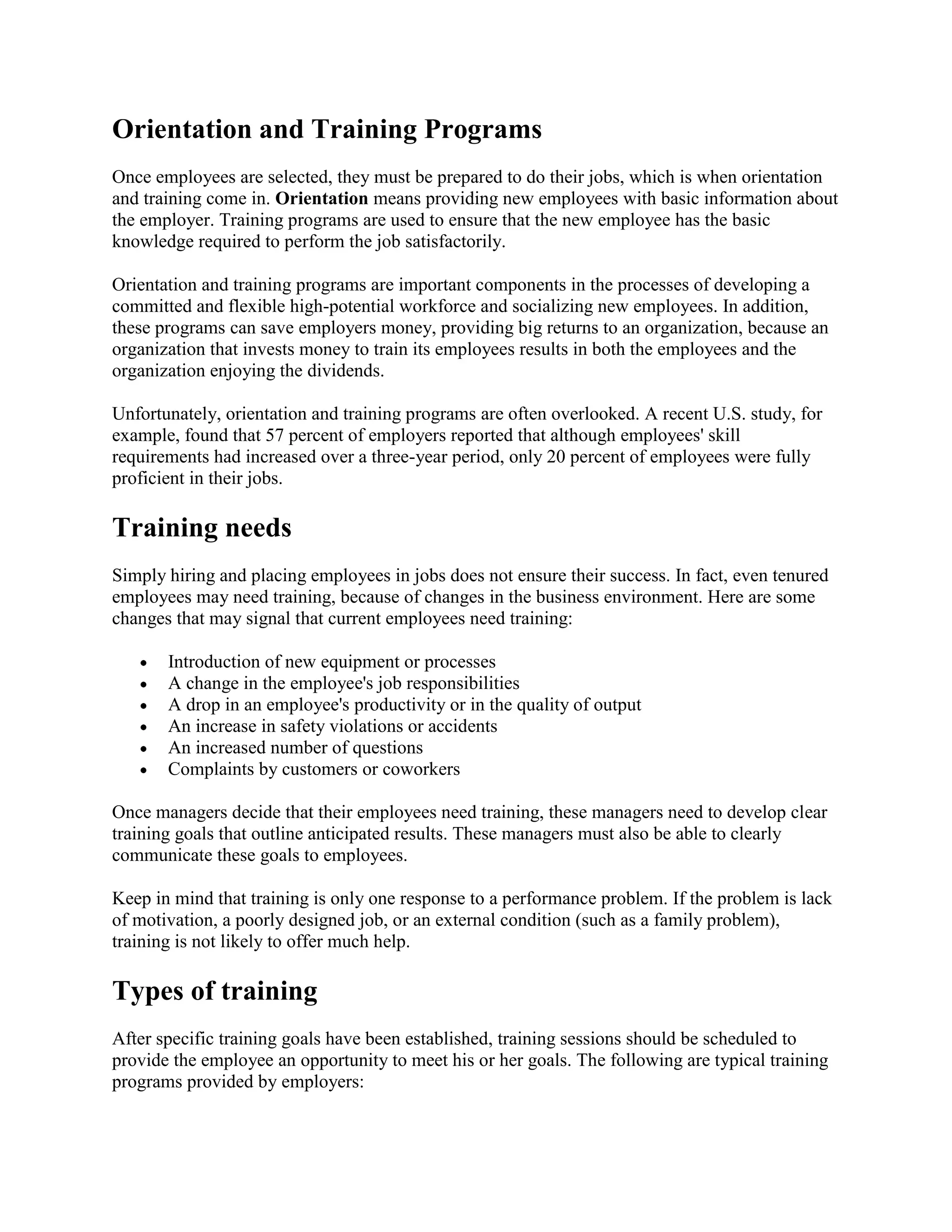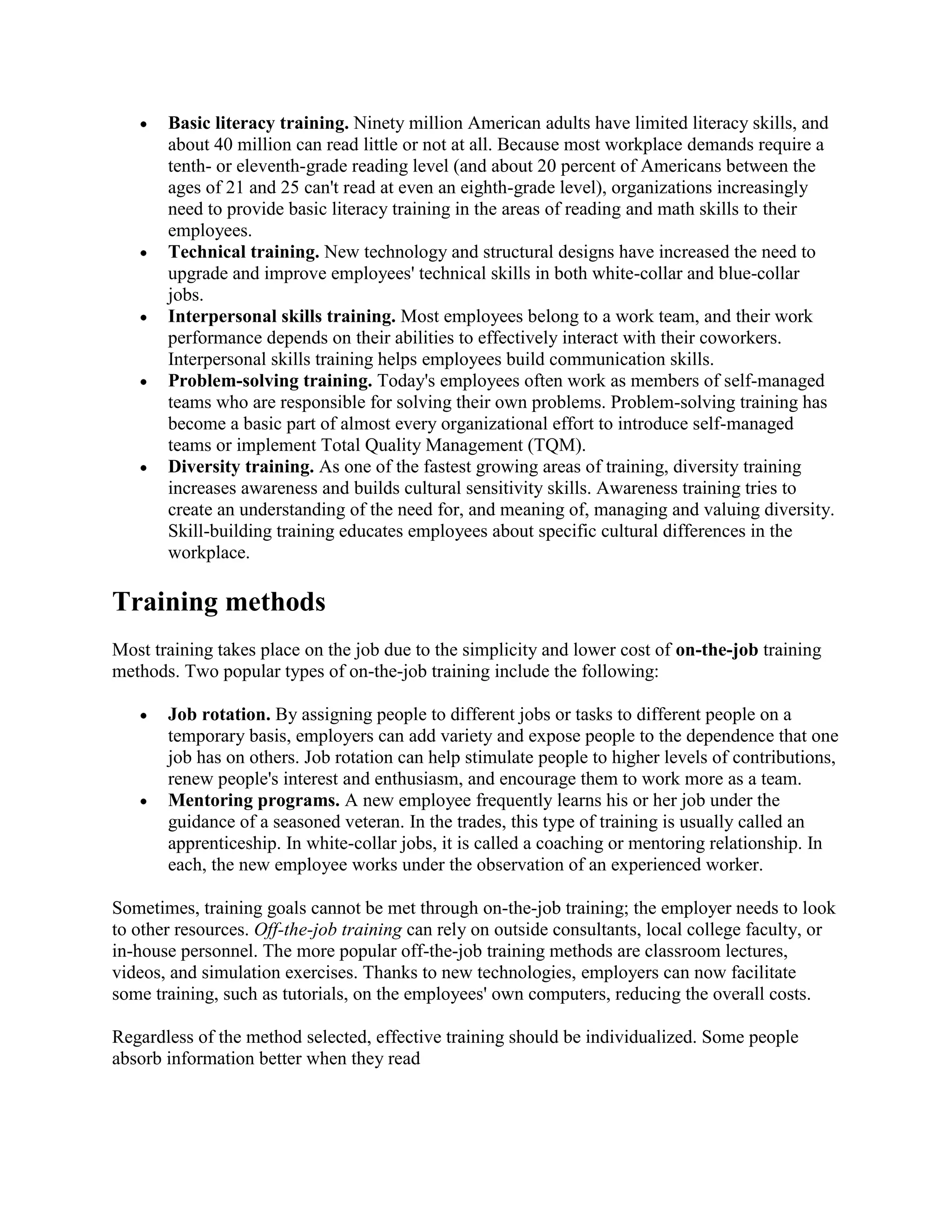Once employees are hired, orientation and training programs are used to prepare them for their roles. Orientation provides basic company information, while training ensures employees have the knowledge to perform their jobs satisfactorily. These programs are important for developing committed employees and acclimating new hires. They can also save employers money through improved performance. However, many employers overlook orientation and training despite increasing skill requirements. Training may be needed for tenured employees due to workplace or job changes. Employers must establish clear training goals and communicate them. While training is one solution, other issues like motivation may require different responses. Common types of training include literacy, technical skills, interpersonal skills, and diversity awareness. On-the-job methods like


